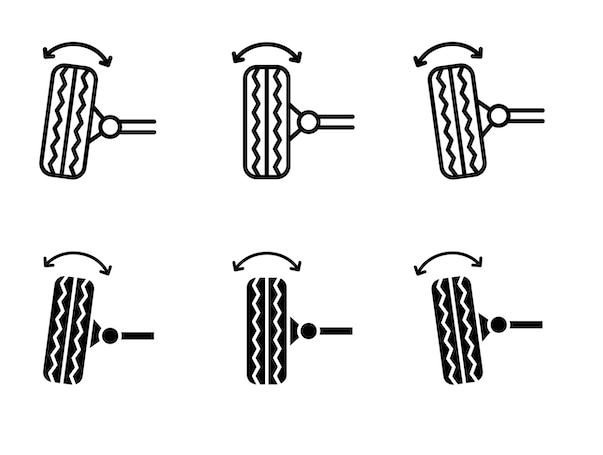Caster is a bit more difficult to explain. Basically, it is the difference between the upper and lower ball joint. When the lower ball joint is leading, you have positive caster. It is just like the front forks of a bicycle. The forks point forward for better stability. A straighter caster would cause your car to drift left or right easily. Positive caster calms this down and allows the front wheels to track true. Negative caster is the opposite, when the steering axis is pointing forward. Your car will always pull towards negative caster or toward positive camber. The correct caster angle for your car as designed by the automaker ensures your safety on the road. How does camber, caster, and toe get thrown out of whack? Partially because many suspension parts are currently made out of aluminum to lighten the weight of the vehicle, but aluminum is a softer metal than steel and it is easier for it to bend under stress. Couple that with today's low-profile tires and higher impact to the suspension parts and you have a chance that your car's alignment will shift over time.
One thing that can knock your alignment out of true is going over potholes. You can bend suspension parts or even bend a wheel. You can hit a pothole so hard that it literally breaks the bead on a tire or even break the belts inside the tire. How do you know if a pothole has knocked your alignment out? Look at your steering wheel. It may be turned at an angle instead of tracking straight. If your steering wheel is turned at an angle while you are going straight, your car is out of alignment. Another tell-tale sign that you need an alignment is when you notice a lot of shaking in the steering wheel. Many people only get an alignment done when they buy a new set of tires. But if your car drifts to one side or the other, or if it vibrates when going down the road, there's a good chance it needs a front-end alignment.



